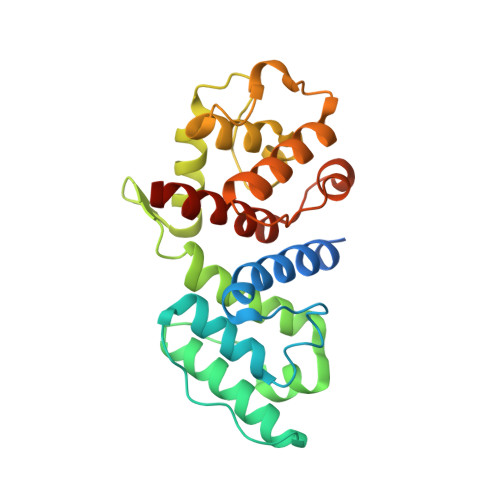The crystal structure of the actin binding domain from alpha-actinin in its closed conformation: structural insight into phospholipid regulation of alpha-actinin
Franzot, G., Sjoblom, B., Gautel, M., Djinovic Carugo, K.(2005) J Mol Biol 348: 151-165
- PubMed: 15808860
- DOI: https://doi.org/10.1016/j.jmb.2005.01.002
- Primary Citation of Related Structures:
1TJT, 1WKU - PubMed Abstract:
Alpha-actinin is the major F-actin crosslinking protein in both muscle and non-muscle cells. We report the crystal structure of the actin binding domain of human muscle alpha-actinin-3, which is formed by two consecutive calponin homology domains arranged in a "closed" conformation. Structural studies and available biochemical data on actin binding domains suggest that two calponin homology domains come in a closed conformation in the native apo-form, and that conformational changes involving the relative orientation of the two calponin homology domains are required for efficient binding to actin filaments. The actin binding activity of muscle isoforms is supposed to be regulated by phosphatidylinositol 4,5-bisphosphate (PtdIns(4,5)P2), which binds to the second calponin homology domain. On the basis of structural analysis we propose a distinct binding site for PtdIns(4,5)P2, where the fatty acid moiety would be oriented in a direction that allows it to interact with the linker sequence between the actin binding domain and the first spectrin-like repeat, regulating thereby the binding of the C-terminal calmodulin-like domain to this linker.
Organizational Affiliation:
Structural Biology Laboratory, Elettra-Sincrotrone Trieste in Area Science Park, S.S. 14 Km 163,5 34012 Trieste, Italy.














